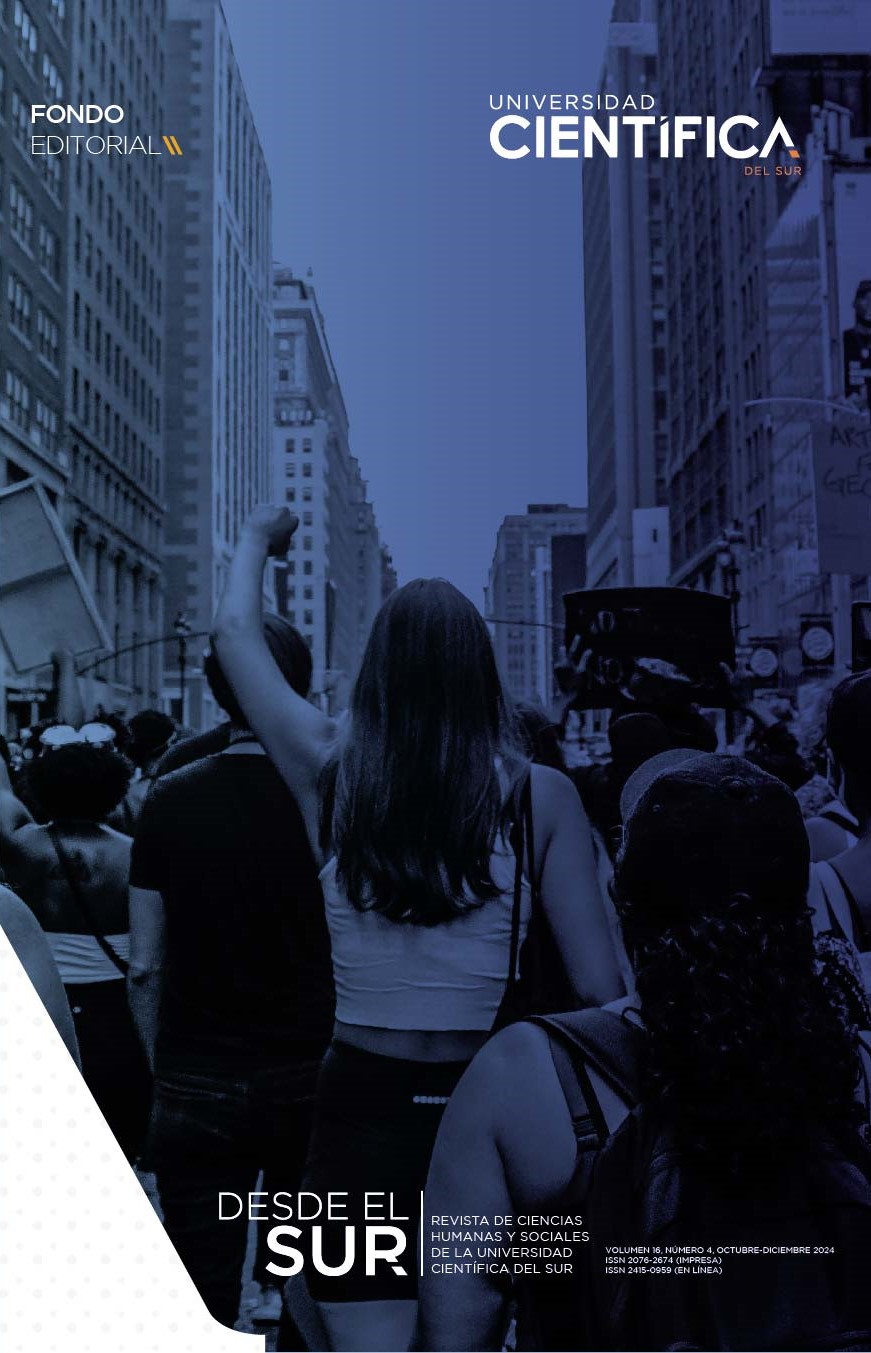Media practices and collective memory: forced sterilisations in Peru and the modification of the Law of Integral Reparation (2012-2021)
DOI:
https://doi.org/10.21142/DES-1604-2024-0059Keywords:
Forced sterilizations, media practices, collective memory, comprehensive law on reparations, human rights, feminismAbstract
This article carries out a historical analysis from the perspective of cultural studies of media practices related to the case of forced sterilisations in Peru during the period between 2012 and 2021. It raises the question of the reasons why initiatives aimed at achieving justice and reparation, such as the registry of victims of forced sterilisations (REVIESFO) or the proposed modification of the Law of Integral Reparation (PIR), are not progressing. It examines the possible impact on the collective memory of forced sterilisations by groups that have denied these practices over time, as well as by human rights movements, feminists and collectives that have united in defence of women affected by these sterilisations. The methodology employed consisted of semi-structured interviews with political actors who participated in the process of modifying the PIR Law, together with an analysis of media practices during electoral elections and of groups or social movements that defend and seek justice on the case in virtual spaces. The methodological and theoretical approach focuses on cultural studies and collective memories present in social network environments.
Downloads
References
Ballón, A. (9 de febrero de 2021). Fujimori y el crimen de Estado contra las mujeres indígenas. Contexto y Acción. https://t.ly/cxyM8
Boesten, J. (2010). Intersecting inequalities. Women and social policy in Peru, 1990-2000. Pennsylvania State University Press.
Caballero, G. (2018). Redes sociales y feminismos en la acción colectiva: el caso de «Ni Una Menos» en el Perú. [Tesis de maestría en Sociología, Pontificia Universidad Católica del Perú]. /https://tesis.pucp.edu.pe/repositorio/bitstream/handle/20.500.12404/11944/CABALLERO%20ROJAS%2c%20GERARDO%20ALONSO.pdf?sequence=6&isAllowed=y
Castells, M. (2012). Redes de indignación y esperanza. Alianza Editorial.
Caviglia, A. (2023). Responsabilidad y debate público. Sobre el vigésimo aniversario de la entrega del IF-CVR. Sílex, 13(1), 36-69. https://doi.org/10.53870/silex.2023131246
Cedano, M. Y. (2021). Informe técnico GREF.
Comité de América Latina y el Caribe para la Defensa de los Derechos de la Mujer (CLADEM) y Centro Legal para Derechos Reproductivos y Políticas Públicas (CRLP). (1998). Silencio y complicidad. Violencia contra las mujeres en los servicios públicos de salud en el Perú. CLADEM y CRLP.
Comisión de la Verdad y Reconciliación, CVR. (2003). Informe final. http://www.cverdad.org.pe/ifinal/
Comisión Especial sobre Actividades de Anticoncepción Quirúrgica Voluntaria (AQV). (2002). Informe final. https://1996pnsrpf2000.wordpress.com/wp-content/uploads/2011/07/informe-final-comision-especial-aqv.pdf
Curo, S. (19 de mayo de 2023). Alberto Fujimori niega esterilizaciones forzadas: «Es falso, se ofrecieron todos los métodos de planificación». https://www.infobae.com/peru/2023/05/19/alberto-fujimori-niega-esterilizaciones-forzadas-es-falso-se-ofrecieron-todos-los-metodos-de-planificacion/
D’Andrea, A. (2020). Mujeres y máquinas: alianzas políticas en el ciberfeminismo de Sadie Plant. Cuadernos del Sur Filosofía, 49, 83-101. https://revistas.uns.edu.ar/csf/article/view/3769/2055
Deutsche Welle, DW. (15 de mayo de 2021). Perú: Keiko Fujimori niega las esterilizaciones forzadas. https://www.dw.com/es/per%C3%BA-keiko-fujimori-niega-las-esterilizaciones-forzadas/a-57538771
Halbwachs, M. (1992). La memoria colectiva. Prensas de la Universidad de Zaragoza.
Haraway, D. (1984). Manifiesto ciborg. El sueño irónico de un lenguaje común para las mujeres en el circuito integrado. S. e.
Instituto de Estadística e Informática, INEI. (2023). Innovar para conectar: estrategias y medidas de regulación inteligente para reducir la brecha digital. https://cdn.www.gob.pe/uploads/document/file/4341442/Innovar%20para%20conectar.pdf?v=1684376266
Jelin, E. (2002). Los trabajos de la memoria. Instituto de Estudios Peruanos.
León, M. (2011). Keiko Fujimori rechazó excesos por esterilizaciones forzadas. http://archivo.elcomercio.pe/politica/gobierno/keiko-fujimori-rechazo-excesos-esterilizaciones-forzadas-noticia-766801
Lerner, A. (2009). Las polémicas mediáticas en la campaña de esterilizaciones masivas en el Perú de Fujimori (1994-1998). [Tesis de licenciatura en Historia, Pontificia Universidad Católica del Perú). https://tesis.pucp.edu.pe/repositorio/handle/20.500.12404/449
Resolución Magisterial 0319-2015-JUS. (2015). Aprueban el «Procedimiento para la inscripción en el Registro de Víctimas de Esterilizaciones Forzosas en el periodo 1995-2001 (REVIESFO)» y su anexo «Ficha única de recojo de información REVIESFO 1995-2001». https://www.mef.gob.pe/contenidos/servicios_web/conectamef_quechua/pdf/normas_legales_2012/NL20151207.pdf
Ruiz, I. (2019a). Documental social y nuevas plataformas para la justicia, reparaciones simbólicas y empoderamiento. Caso Esterilizaciones Forzadas en Huancabamba (2012-2016). Anthropologica, 37(42), 155-175. https://doi.org/10.18800/anthropologica.201901.007
Ruiz, I. (2019b). Las secuelas de las esterilizaciones forzadas en el gobierno de Fujimori: la lucha por el reconocimiento. 2011-2016. [Tesis de PhD, University of Kent]. https://shorturl.at/10hqK
Ugarte, D. (2007). El poder de las redes. Manual para personas, colectivos y empresas abocadas al ciberperiodismo. El Cobre.
Varela, N. (2019). Feminismo 4.0. La cuarta ola. Penguin Random House.
Downloads
Published
Issue
Section
License

Esta obra está bajo una licencia http://creativecommons.org/licenses/by-nc-sa/4.0/



















